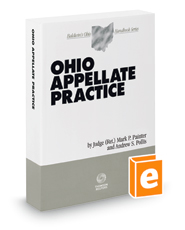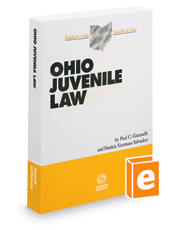Articles Published in 2009
Articles on our Scholarly Commons
Book Chapters Published in 2009
Andrew S. Pollis, The Independent Lawyer : Image v. Substance, in A Century of Legal Ethics: Trial Lawyers and ABA Canons of Professional Ethics 233 (Lawrence J. Fox, Susan R. Martyn & Andrew S. Pollis eds., 2009) .
-
A Century of Legal Ethics by
Call Number: KF306 .C46 2009ISBN: 9781604424942Publication Date: 2009
Calvin W. Sharpe, Issues in Controlling the Arbitration Hearing, in Arbitration 2008 : U.S. and and Canadian arbitration: Same Problems, Different Approaches, Proceedings of the Sixty-first of Annual Meeting, National Academy of Arbitrators (Patrick Halter & Paul D. Staudohar eds., 2009) .
-
 Arbitration 2008
by
ISBN: 9781570187841Publication Date: 2009
Arbitration 2008
by
ISBN: 9781570187841Publication Date: 2009
Sharona Hoffman, Electronic Health Information Security and Privacy, in Harboring Data: Information Security, Law and the Corporation 103 (Andrea M. Matwyshyn ed., 2009) (with Andy Podgurski).
-
Harboring Data by
Call Number: KF1263.C65 H37 2009ISBN: 9780804760089Publication Date: 2009As identity theft and corporate data vulnerability continue to escalate, corporations must protect both the valuable consumer data they collect and their own intangible assets. Both Congress and the states have passed laws to improve practices, but the rate of data loss persists unabated and companies remain slow to invest in information security. Engaged in a bottom-up investigation, Harboring Data reveals the emergent nature of data leakage and vulnerability, as well as some of the areas where our current regulatory frameworks fall short.With insights from leading academics, information security professionals, and other area experts, this original work explores the business, legal, and social dynamics behind corporate information leakage and data breaches. The authors reveal common mistakes companies make, which breaches go unreported despite notification statutes, and surprising weaknesses in the federal laws that regulate financial data privacy, children's data collection, and health data privacy. This forward-looking book will be vital to meeting the increasing information security concerns that new data-intensive business models will have.
Richard K. Gordon, International Financial Centre, in Money Laundering, Tax Evasion and Tax Havens 78 (David Chaikin ed., 2009) (with Jason Sharmon).
Richard K. Gordon, What Anti-Money Laundering Policy Can Learn from Tax Administration, in Money Laundering, Tax Evasion and Tax Havens 63 (David Chaikin ed.,2009) .
-
Money Laundering, Tax Evasion and Tax Havens by
Call Number: KU2808 .M66 2009ISBN: 1921509732Publication Date: 2009
Maxwell J. Mehlman, Genetic Enhancement in Sport: Ethical, Legal, and Policy Concerns, in Performance-Enhancing Technologies in Sports: Ethical, Conceptual, and Scientific Issues 205 (Thomas H. Murray, Karen J. Maschke & Angela A. Wasunna eds., 2009) .
-
Performance-Enhancing Technologies in Sports by
Call Number: OhioLinkISBN: 9780801893612Publication Date: 2009This book brings together an interdisciplinary group of experts in bioethics, sports, law, and philosophy to examine the need for regulating such athletic performance-enhancing technologies as steroids and gene doping. The use of performance-improving drugs in sports dates back to the early Olympians, who took an herbal tonic before competitions to augment athletic prowess. But the permissibility of doing so came into question only in the twentieth century as the popularity of anabolic steroid use and blood doping among athletes grew. Sports officials and others--aided by the development of technologies to test participants for proscribed substances--became concerned over the physical safety of athletes and competitive fairness in sporting events. In exploring the culture, ethics, and policy issues surrounding doping in competitive athletics, the contributors to this volume detail the history and current state of drug use in sports, analyze the distinctions between acceptable and unacceptable usages, evaluate the ethical arguments for and against permitting athletes to avail themselves of new means of improving athleticism, and discuss possible future doping technologies and the issues that they are likely to raise. They explain how and why some athletes resort to doping and assess what the fair opportunity principle means in theory and practice and how it relates to the concept of an equal opportunity to perform. This frank discussion of doping in sports includes accounts by former elite athletes and offers an illuminating exchange over the meaning and value of natural talents and genetic hierarchies and the essence of fair competition.
Martha Woodmansee, Copyright in Transition, in 4 A History of the Book in America 90 (Carl F. Kaestle & Janice A. Radway eds., 2009) (with Peter Jaszi).
-
A History of the Book in America by
Call Number: Z473.P75 2009 (Kelvin Smith Library)ISBN: 9780807831861Publication Date: 2009In a period characterized by expanding markets, national consolidation, and social upheaval, print culture picked up momentum as the nineteenth century turned into the twentieth. Books, magazines, and newspapers were produced more quickly and more cheaply, reaching ever-increasing numbers of readers. Volume 4 of A History of the Book in America traces the complex, even contradictory consequences of these changes in the production, circulation, and use of print. Contributors to this volume explain that although mass production encouraged consolidation and standardization, readers increasingly adapted print to serve their own purposes, allowing for increased diversity in the midst of concentration and integration. Considering the book in larger social and cultural networks, essays address the rise of consumer culture, the extension of literacy and reading through schooling, the expansion of secondary and postsecondary education and the growth of the textbook industry, the growing influence of the professions and their dependence on print culture, and the history of relevant technology. As the essays here attest, the expansion of print culture between 1880 and 1940 enabled it to become part of Americans' everyday business, social, political, and religious lives. Contributors: Megan Benton, Pacific Lutheran University Paul S. Boyer, University of Wisconsin-Madison Una M. Cadegan, University of Dayton Phyllis Dain, Columbia University James P. Danky, University of Wisconsin-Madison Ellen Gruber Garvey, New Jersey City University Peter Jaszi, American University Carl F. Kaestle, Brown University Nicolas Kanellos, University of Houston Richard L. Kaplan, ABC-Clio Publishing Marcel Chotkowski LaFollette, Washington, D.C. Elizabeth Long, Rice University Elizabeth McHenry, New York University Sally M. Miller, University of the Pacific Richard Ohmann, Wesleyan University Janice A. Radway, Duke University Joan Shelley Rubin, University of Rochester Jonathan D. Sarna, Brandeis University Charles A. Seavey, University of Missouri, Columbia Michael Schudson, University of California, San Diego William Vance Trollinger Jr., University of Dayton Richard L. Venezky (1938-2004) James L. W. West III, Pennsylvania State University Wayne A. Wiegand, Florida State University Michael Winship, University of Texas at Austin Martha Woodmansee, Case Western Reserve University
Paul C. Giannelli, DNA Profiling, in Race to Injustice: Lessons Learned from the Duke LaCrosse Rape Case 323 (Michael Seigel ed., 2009) .
-
Race to Injustice by
Call Number: KFN7977 .R33 2009ISBN: 9781594605147Publication Date: 2009The American criminal justice system, though undoubtedly one of the best in the world, is far from perfect. Every once in a while a notorious case comes along and reveals its uglier side¿¿for instance, its differential treatment of whites and people of color. Such cases often garner huge amounts of national media attention and capture the sustained interest of a normally restless American public. Whatever their outcome, they provide academics with exceptional opportunities to study, learn, and teach about the justice system. They also offer the chance to study related matters, such as the conduct of particular law enforcement and other officials, as well as the underlying causes of crime and the public's reaction to it. The Duke lacrosse players' rape prosecution is one such case. One evening in March 2006, members of the lacrosse team held an off-campus party where alcohol was served and two erotic dancers were hired to perform. A disagreement broke out between the dancers and the players; later, one of the former, Crystal Mangum, alleged that three players had raped her. Mangum was black and relatively poor; the accused were white and relatively privileged. Up for re-election in a jurisdiction with many African American voters, District Attorney Mike Nifong pursued the case very aggressively. He used questionable identification procedures and was unusually outspoken in numerous local and national media appearances. Even after DNA evidence indicated that the defendants had not engaged in sexual activity with the victim, he declined to drop the charges. Worse, he hid other exculpatory DNA evidence. The case split the Duke campus, the Durham community, and observers at large into sharply divided factions. Desperately trying to preserve its hard-won reputation as an upper-echelon school, the university cancelled the lacrosse season, suspended the three indicted players, and commenced a series of internal investigations. After months of dramatic twists and turns, the North Carolina Bar Association charged Nifong with violating several ethics provisions based on his handling of the prosecution. Within days of being charged, Nifong relinquished the case to the North Carolina Attorney General who, after reviewing the proof, dismissed all remaining charges against the lacrosse players and publicly declared their innocence. After a thirteen-month ordeal, the case was finally over. Eventually, the disgraced Nifong was disbarred.
Maxwell J. Mehlman, A New Era of Biomedical Enhancements, in Science and Technology 59 (2009) .
Books Published in 2009
-
A Century of Legal Ethics by
Call Number: KF306 .C46 2009ISBN: 9781604424942Publication Date: 2009 -
Courtroom Criminal Evidence (4th ed) byPublication Date: 2005-2010 (annual supplements)
-
Criminal Jurisdiction 100 Years after the 1907 Hague Peace Conference by
Call Number: OhioLinkISBN: 9789067042802Publication Date: 2009We have taken note with considerable admiration and satisfaction the completion of the manuscript of this book. It contains the proceedings of the highly successful Joint Conf- ence of the American Society of International Law and the Netherlands Society of Int- national Law, entitled Criminal Jurisdiction 100 Years Afer the 1907 Hague Peace Conference. Our Hague Joint Conferences have increasingly come to serve as the main transatlantic meeting place and forum of debate of international lawyers, including both practitioners and academics. As such they play a useful role in promoting mutual und- standing and international co-operation. It proved to be highly relevant to commemorate the Second Hague Peace Conf- ence of 1907 and discuss its contemporary relevance. Whereas international criminal jurisdiction as such was not yet a topic at that time, the 1907 discussions were in ret- spect already highly relevant to it. Te Second Hague Peace Conference resulted in a major revision of the 1899 Convention on the Pacifc Settlement of International Disputes, a Declaration on obligatory arbitration, a Draf Convention for the Creation of a Court of Arbitral Justice (efectively the frst draf of what would become the Statute of the Permanent Court of International Justice), a Convention on the Creation of an International Prize Court (which as a result of a lack of ratifcations never came into being) and a series of other conventions, declarations and regulations concerning naval and land warfare. -
Do No Wrong: Ethical Issues for Prosecution and Defenders by
Call Number: Law Library Stacks KF9619 .J69 2009ISBN: 9781604422696Publication Date: 2009 -
Down to Earth (2nd ed) by
Call Number: GF27.S85 2009 (Kelvin Smith Library)ISBN: 9780195331820Publication Date: 2009Down to Earth is a compelling and driven look at the history of the United States from the ground up. Starting with the geological History of the continent Ted Steinberg reenvisions major moments in American History such as colonization, the industrial revolution, the Civil War, and the riseof modern consumer culture from the environmental perspective. By focusing on the way that nature increasingly became viewed as a commodity, Steinberg brings an overall theme and argument to the story of the American Nation. Steinberg's lively writing style and his compelling vision of history as environmental have made this book the choice of Environmental Historians across the country, a group that often prefers monographs and articles to traditional textbooks. It is that Steinberg's book argues like a monograph andreads like a trade history that has brought it such success. Steinberg has heavily revised the section on the twentieth century and introduced a new theme, that of the rise of the corporation, which will better integrate the twentieth century section into the rest of the text, and allow for a morenuanced and interesting argument about the last hundred years. -
Giannelli Snyder Rules of Evidence Handbook (2009 ed) by
Call Number: KFO540.G53Publication Date: 2009 -
 Katz & Giannelli Ohio Criminal Laws and Rules (2009 ed)
by
Call Number: KFO561.A29O32Publication Date: 2009From publisher: "Providing a comprehensive criminal law reference for use in court, office, classroom, or police cruiser, Ohio Criminal Laws and Rules is written for everyone involved with Ohio’s criminal justice system. Contents include the full text of Ohio Revised Code Title 29 and selected provisions of the Ohio Constitution..."
Katz & Giannelli Ohio Criminal Laws and Rules (2009 ed)
by
Call Number: KFO561.A29O32Publication Date: 2009From publisher: "Providing a comprehensive criminal law reference for use in court, office, classroom, or police cruiser, Ohio Criminal Laws and Rules is written for everyone involved with Ohio’s criminal justice system. Contents include the full text of Ohio Revised Code Title 29 and selected provisions of the Ohio Constitution..." -
Katz Giannelli Criminal Law (3rd ed) by
Call Number: KFO561 .K37 2009ISBN: 9780314903587Publication Date: 2009 - (annual supplement) -
Katz Giannelli Criminal Law (3rd ed) by
Call Number: KFO561 .K37 2009ISBN: 9780314903587Publication Date: 2009 -
New York Suppression Manual : Arrest, Search & Seizure, Confession, Identification byCall Number: KFN6166.K389 1991Publication Date: 1991 - 2012 (looseleaf)
-
 Ohio Appellate Practice (2009 ed)
by
Call Number: KFO555.A4ISBN: 9781539228240Publication Date: 2009From publisher: "Ohio Appellate Practice provides fast answers to questions about appellate practice in Ohio, as well as in-depth analysis of all of the most recent caselaw, rules, and statutes governing it. The text covers all aspects of practice..."
Ohio Appellate Practice (2009 ed)
by
Call Number: KFO555.A4ISBN: 9781539228240Publication Date: 2009From publisher: "Ohio Appellate Practice provides fast answers to questions about appellate practice in Ohio, as well as in-depth analysis of all of the most recent caselaw, rules, and statutes governing it. The text covers all aspects of practice..." -
 Ohio Arrest, Search and Seizure (2009 ed)
by
Call Number: KFO576.K37ISBN: 9781539228394Publication Date: 2009From the publisher: "In Ohio Arrest, Search and Seizure, a nationally recognized Fourth Amendment authority examines the balance of an individual's rights with legitimate law enforcement procedures, as reflected in decisions of the U.S. Supreme Court, Ohio criminal rules and statutes, and state caselaw. This basic reference on Ohio criminal procedure interprets new trends and developments while addressing facts and holdings in more than 800 cases.."
Ohio Arrest, Search and Seizure (2009 ed)
by
Call Number: KFO576.K37ISBN: 9781539228394Publication Date: 2009From the publisher: "In Ohio Arrest, Search and Seizure, a nationally recognized Fourth Amendment authority examines the balance of an individual's rights with legitimate law enforcement procedures, as reflected in decisions of the U.S. Supreme Court, Ohio criminal rules and statutes, and state caselaw. This basic reference on Ohio criminal procedure interprets new trends and developments while addressing facts and holdings in more than 800 cases.." -
 Ohio Juvenile Law (2009 ed)
by
Call Number: KFO595.O38Publication Date: 2009From the publisher: "Ohio Juvenile Law is a straightforward treatise containing selected provisions of the state revised code and rules of procedure and covering all major aspects of juvenile law..."
Ohio Juvenile Law (2009 ed)
by
Call Number: KFO595.O38Publication Date: 2009From the publisher: "Ohio Juvenile Law is a straightforward treatise containing selected provisions of the state revised code and rules of procedure and covering all major aspects of juvenile law..." -
 Ohio School Law (2009 ed)
by
Call Number: KFO390.L48Publication Date: 2009From publisher: Ohio School Law contains the authors' text from Baldwin's Ohio School Law in a handy format, with cross-references to federal and state statutes and caselaw. Expert commentary is geared to your practical needs, and it discusses all aspects of Ohio school law, with special emphasis on topics of current concern..."
Ohio School Law (2009 ed)
by
Call Number: KFO390.L48Publication Date: 2009From publisher: Ohio School Law contains the authors' text from Baldwin's Ohio School Law in a handy format, with cross-references to federal and state statutes and caselaw. Expert commentary is geared to your practical needs, and it discusses all aspects of Ohio school law, with special emphasis on topics of current concern..." -
The Price of Perfection by
Call Number: RA418.5.M4 M45 2009ISBN: 9780801892639Publication Date: 2009Few would question the necessity of artificial limbs for amputees. But what of surgery to lengthen the legs of children who are merely shorter than average? Hardly anyone would challenge the decision to prescribe Aricept to people with dementia. But is it acceptable to give the same medication to airline pilots seeking sharper mental focus on long-haul flights? Humans have engaged in biological self-improvement since long before recorded history, from the impotence-curing wild lotus brew of the ancient Egyptians to the herbal energy drink favored by early Olympians. Now biomedical enhancements are pushing the boundaries of possibility and acceptability. Where do we draw the line? How do we know the true ramifications of pioneering medicine? What price are we willing to pay for perfection? Maxwell J. Mehlman's provocative examination of these issues speaks to fundamental questions of what it means to be human. He finds public officials ill-equipped to handle the ethical, scientific, and public policy quandaries of biomedical enhancement. Instead of engaging difficult questions of morality, access, fairness, and freedom, elected officials have crafted toothless and counterproductive laws and regulations. Mehlman outlines policy options to boost the societal benefits and minimize the risks from these technologies. In the process, he urges the public to face the ethical issues surrounding biomedical enhancement, lest our quest for perfection compromise our very humanity. -
Questions & Answers: Criminal Procedure I & II (2nd ed) byCall Number: KF9619.5 .K38 2009Publication Date: 2009
-
Scientific Evidence (4th ed) by
Call Number: KF8961.G53 2007ISBN: 9780820575766Publication Date: 2007-2011 (annual supplements) -
 Tax Aspects of Marital Dissolution (2nd Rev. ed)
by
Call Number: KF6333.G33 2005Publication Date: 2005 - (loose-leaf)
Tax Aspects of Marital Dissolution (2nd Rev. ed)
by
Call Number: KF6333.G33 2005Publication Date: 2005 - (loose-leaf) -
Understanding Evidence (3rd ed) by
Call Number: KF8935 .G52 2009ISBN: 9781422470381Publication Date: 2009This Understanding treatise presents the essential topics in evidence law cogently and concisely. While it was written primarily for students in Evidence and Trial Practice courses, the Key Points summary at the end of each chapter and the inclusion of the current Federal Rules of Evidence in an appendix make this treatise an excellent reference for busy attorneys. Understanding Evidence begins with an overview of Evidence law followed by an explanation of the roles of the judge and jury. The remaining chapters are organized under the following topics: Procedural Framework of Trial Relevancy Witnesses Real and Demonstrative Evidence Writings Hearsay Privileges Substitutes for Evidence This treatise extensively discusses and cites the Federal Rules of Evidence. Cases, statutes, other rules, and secondary sources are also cited, providing a comprehensive framework for understanding evidence law.